Don't let rising summer temperatures stop you from cycling. As seasons change, we adapt our cycling gear and habits to conquer whatever weather comes our way. But before you set out on a summer ride, it's important to equip yourself to recognize and respond to your body’s warning signs of heat exhaustion and dehydration.
In this guide, we’ll provide scientific insights and practical tips to enhance your performance in hot weather while keeping your well-being at the forefront. Whether you’re trying to determine if it's too hot to cycle, in need of tips to cope with hot weather riding, or selecting summer cycling gear, we've got you covered.
How hot is too hot for cycling?
There is no specific point where the temperature transitions from “safe” to “too hot” for cycling outdoors. Many factors, like your physical make-up, windchill, ride duration, amount of shade, or fitness level, influence whether or not the heat is too intense for a ride. So, for example, if your body is conditioned to exercising in the heat and you choose a tree-shaded route, you may be able to withstand hotter temperatures.
But no one is completely immune to the risks of exercising in the heat. Under the right conditions, we’re all susceptible to heat exhaustion or heat stroke in extreme cases. Heat exhaustion occurs when your core body temperature rises to a point where the body's natural cooling mechanisms aren’t enough to release the excess heat.
If your internal temperature rises above average (98.6°F), your body will attempt to cool you down by sweating and pumping more blood to your skin to release heat. But if your internal temperature increases by several degrees, your body may not be able to cool you fast enough to stop symptoms of heat exhaustion–weakness, dizziness, nausea, or fainting.
A heat stroke is more severe and can occur when your temperature rises above 104°F, high enough to slow or stop your body’s cooling processes, damage vital organs, and require emergency treatment. Symptoms of a heat stroke include confusion or delirium, a racing heart rate, and rapid breathing. The chances of a heat stroke are higher if you aren’t used to working out in the heat and overexert yourself.
The likelihood of heat exhaustion is not the same for every person. Certain factors can increase your risk of heat-related illness, including not being in shape or conditioned to ride in the heat. Certain medications, chronic diseases, or the use of alcohol can also increase your risk. Even if your chances of heat exhaustion are low, pay careful attention to your body’s warning signs and stop cycling to cool off if you start noticing symptoms.
How can heat affect your cycling performance?
Heat can impair aerobic performance when hyperthermia, or an abnormally high body temperature, occurs. However, cycling in hot weather does not always lead to hyperthermia, especially if you’re a well-trained and well-prepared cyclist.
The British Journal of Sports Medicine published a study where 40 women cyclists competing in the 2016 UCI Road World Championships in Qatar in 98.4° weather swallowed thermometer pills to determine how hot weather would affect their performance. Three cyclists’ internal temperature rose above 105°F, but their team won a medal and they never experienced a heat stroke.
However, other research shows that athletic performance can suffer in hot weather. Outdoor athletic championships between 2009–2018 calculated the daily occurrences of heat-related illness among athletes. The results revealed that higher temperatures increased heat-related illness, particularly among long-duration athletes. Additionally, a review of scientific literature on athletic performance in the heat, conducted for the Tokyo 2020 Olympic Games, claims that heat stress can negatively impact performance and those heat alleviation strategies are essential for athletes, no matter their level of aerobic fitness.
One distinction of the cyclists who won a medal in Qatar despite the extreme heat is that they had completed heat acclimatization training before the competition. Heat acclimatization can help athletes optimize performance and reduce the strain on the body when competing or training in hot weather.
These studies demonstrate that conditioning in hot weather and a high level of fitness can prepare your heart and body to perform well in the heat, but this does not entirely remove the risk of heat exhaustion or dehydration, even for elite athletes. If you are conditioned to cycle in really hot weather, staying cool and hydrated is still essential for peak performance.
How can dehydration affect performance in hot weather?
When your temperature rises as you cycle on a hot day, your sweat rate increases and prolonged and profuse sweating increases your risk of dehydration. Dehydration strains your cardiovascular system and blood pressure regulation, so your heart has to pump harder to supply your muscles with enough oxygen, and you have less energy and endurance. Hydration is vital to your performance and well-being to stay hydrated while cycling.
Aerobic performance is impaired when body water deficits exceed approximately 2% of your body mass, so calculating your sweat rate can indicate how often your ride requires you to hydrate. For every 1 kg of body weight lost after a one-hour ride in hot weather, you should replace it with 1 liter of fluid.
Learn more: How to Fuel Properly Before, During, & After Your Ride
8 Tips for cycling in hot weather
1. Heat acclimatize.
If you’re anticipating a long outdoor race, heat acclimatization will help you perform your best. This involves cycling consecutive days in the heat for one or two weeks before the race while staying well-hydrated. Heat acclimatization will improve your blood flow and cardiovascular function in hot weather.
2. Start and stay hydrated.
Start cycling in a hydrated state by drinking 6 mL of fluid per kg of body weight every few hours before your ride. Guzzling water during a ride on a hot day isn’t enough. Our bodies lose electrolytes like sodium and potassium when we sweat, so it’s important to choose hydration drinks that will replace lost electrolytes.
Choose from 12 of our favorite hydration drinks to replenish your electrolytes on a hot summer ride.
3. Stop cycling if you notice symptoms of heat exhaustion.
If you begin to notice muscle weakness, lightheadedness, nausea, or any other symptoms, it’s not a good idea to continue cycling. Stop and cool down, take a drink, and remove any extra layers. If symptoms persist, you should seek help from emergency medical personnel.
4. Don’t ride in the hottest part of the day.
Avoid cycling when temperatures are at their highest and ride during the early morning or late evening when it’s cooler. You’ll reduce your risk of heat exhaustion and enjoy a more comfortable ride.
5. Choose a shaded route.
A shaded route provides natural protection from direct sunlight and reduces the intensity of the sun's rays, keeping you cooler and reducing the risk of overheating.
6. Take it easy in extremely hot weather.
If performance isn’t crucial, lower your intensity and ride at a more moderate pace so your body can manage the heat more efficiently.
7. Cycle indoors if the heat is too intense.
Indoor cycling provides a controlled environment where temperature and humidity can be adjusted for a comfortable and safe workout. Cycling indoors allows you to continue training and stay active without exposing yourself to extreme heat.
Learn more: 3 of the Best Indoor Cycling Workouts
8. Gear up for the heat.
Wear lightweight, breathable, and moisture-wicking clothing designed for hot weather cycling, and use sunglasses, sunscreen, and a well-ventilated helmet to keep you cool and protect you from the sun during your ride. Choosing the proper gear aid your body’s cooling mechanisms and enhances your performance in hot weather conditions.
What to wear when cycling in hot weather
In summer, you may need to update your cycling kit for comfort and performance in hot weather. Focus on breathability and sweat management with lightweight, moisture-wicking, and well-ventilated materials to keep you cool and dry. Here’s a list of the essential gear for your summer cycling wardrobe, featuring some of our Hincapie summer favorites.
Summer baselayer
Look for a baselayer made from lightweight, moisture-wicking materials that provide excellent breathability. It should effectively wick sweat away from your skin, helping to keep you cool and dry during your rides.
☀️Hincapie summer favorite: PowerCore Merino Short Sleeve Baselayer
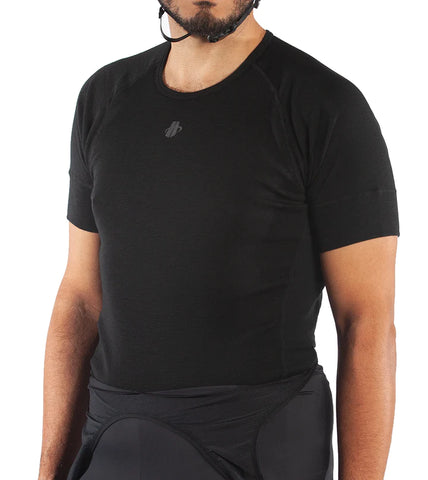
Learn how to choose the best cycling base layer.
A lightweight cycling jersey
Choose a jersey made from lightweight, breathable fabrics with mesh panels to promote airflow. Consider a jersey with a full or partial zip to help you adjust your temperature.
☀️Hincapie summer favorite: Men's Gravity Zero Short Sleeve Jersey & Women's Gravity Zero Short Sleeve Jersey

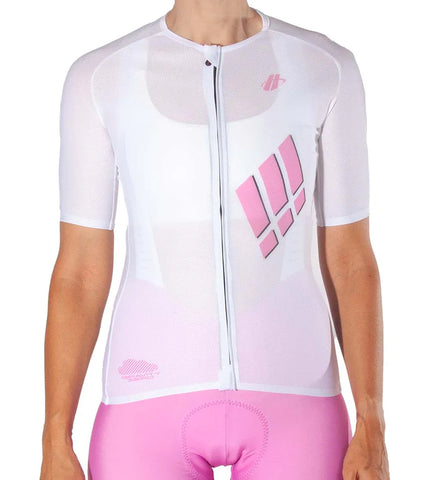
Learn how to choose the best cycling jersey.
Bib shorts
Look for shorts made from breathable and moisture-wicking fabrics, and always choose a pair with a high-quality chamois.
☀️Hincapie summer favorite: Men’s Gravity Zero Bib Short & Women's Gravity Zero Bib


Learn how to choose the best bike shorts.
A waterproof jacket
While not a must-have for hot weather, you may want a super light and packable waterproof jacket in case of an unexpected rain shower. Look for one that’s easy to stow in your jersey pocket when not in use.
☀️Hincapie summer favorite: Men's Element Pocket Shell
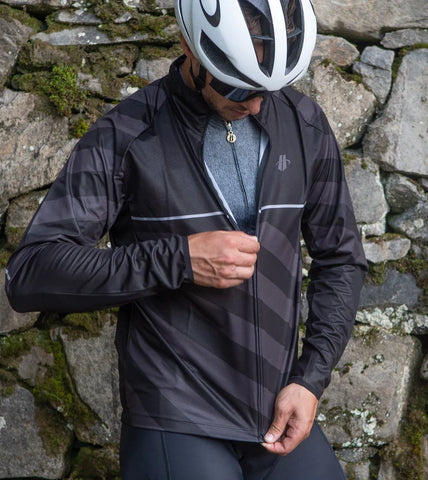
Learn the best tips for cycling in the rain.
A cycling cap for underneath your helmet
Select a lightweight cycling cap that fits comfortably underneath your helmet to provide sun protection and help keep sweat out of your eyes.
☀️Hincapie summer favorite: 20th Anniversary Cycling Cap
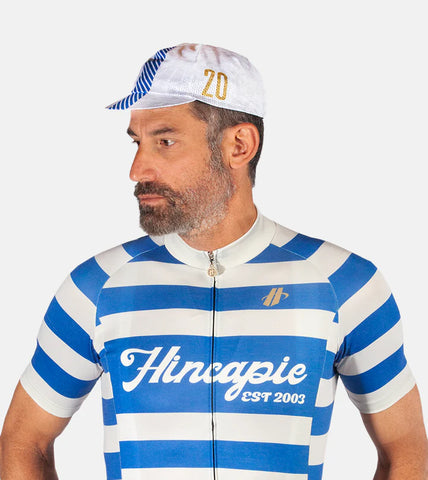
Sunglasses
Choose sunglasses with UV protection to shield your eyes from harmful sun rays. Look for a pair with good coverage with the optimal tint for varying light conditions.
☀️Hincapie summer favorite: Roka CP-1X Sunglasses
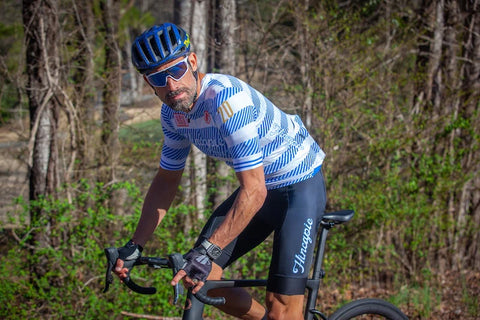
Learn how to choose the best cycling sunglasses.
Don’t let the summer heat stop you from cycling. You can still perform your best with the proper precautions, good hydration, and appropriate gear. Put your warm-weather cycling expertise and gear to the test at a Gran Fondo Hincapie.
Come winter, learn how to be just as prepared for cold-weather riding as you are for summer with the appropriate winter cycling apparel.
You may also like:
